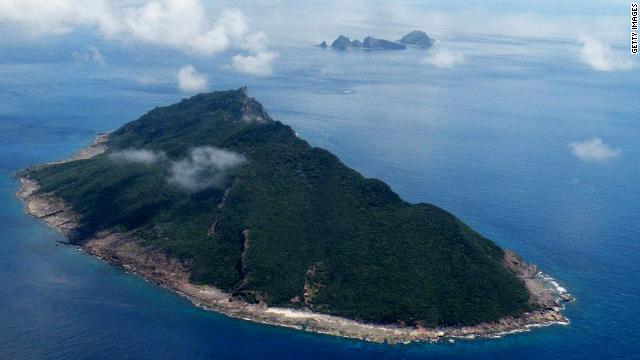
The Ishigaki City Council in Japan’s Okinawa Prefecture passed legislation that changes the administrative status of the uninhabited group of islands, known as Senkakus in Japan and Diaoyus in China.
The bill changes the islands name for administrative purposes from “Tonoshiro” to Tonoshiro Senkaku “to avoid confusion with another area of Ishigaki, NHK News of Japan reported.
The islands, 1,200 miles (1,931 km) southwest of Tokyo, have been administered by Japan since 1972, but both Tokyo and Beijing say their claims to the group date back hundreds of years.
Beijing’s foreign ministry said on Monday it would file a strong protest with Tokyo.
“Diaoyu Island and the affiliated islands are China’s inherent territory, China is determined to safeguard our territorial sovereignty, this so-called administrative re-designation is a serious provocation towards China’s territorial sovereignty,” said Zhao Lijian, spokesman for the Ministry of Foreign Relations of China.
At the same time, the Chinese Coast Guard said a “fleet” of its ships was in the waters around the disputed islands on Monday.
China warned ahead of Monday’s vote against any changes to the status quo on the islands.
“We call on Japan to abide by the spirit of the four-principle consensus, avoid creating further incidents on the Diaoyu Islands issue, and take practical steps to maintain the stability of the East China Sea situation,” a statement by the Ministry of China Foreign Relations on Friday said.
One of those four principles was that Japan recognizes that sovereignty over the islands was in dispute.
But the bill passed in Ishigaki on Monday dismissed any concerns about how the measure might be perceived in Beijing.
“The approval of this case did not take into account the influence of other countries, but was considered to improve the efficiency of administrative procedures,” said the council.
Previously, the Japanese newspaper Asahi Shimbun reported that the bill “states that the islands are part of the Japanese territory.”
It is the kind of language that irritates in Beijing.
“Changing the administrative appointment at this time can only complicate the dispute and create more risk of crisis,” Li Haidong, a professor at the Institute of International Relations at the Chinese Foreign University, told the Global Times.
Last week, fears of a possible clash increased with the announcement by the Japanese coast guard that Chinese government ships had been seen in the waters near the Senakaku / Diaoyu Islands every day since mid-April, setting a new record. for the number of consecutive days. .
By Monday, those sightings had hit 70 days in a row, and Japan’s coast guard said four Chinese ships were in the area while the vote was taking place in Okinawa.
In response to the increased Chinese presence, Yoshihide Suga, chief cabinet secretary of Japan, reaffirmed the Tokyo resolution at a press conference last Wednesday.
“The Senkaku Islands are under our control and are undoubtedly our territory historically and under international law. It is extremely serious that these activities continue. We will respond to the Chinese side firmly and calmly,” said Suga.
Violent protests in China
Before Monday’s vote, the most recent “crisis” on the islands occurred in 2012.
That year, Japan nationalized the privately owned islands to avoid a planned sale to the then-governor of Tokyo, a hard-line nationalist who reportedly hoped to develop the islands.
The protests turned violent as protesters dumped rubble at the Japanese embassy in Beijing, looted Japanese shops and restaurants, and overturned Japanese cars.
In a stark illustration of how the islands are sinking into Chinese consciousness, their compatriots beat up a Chinese man in a coma simply because he was driving a Toyota Corolla.
What complicates any dispute over the islands, should it ever escalate to the point of military confrontation, is that the United States is obligated to defend them as part of Japanese territory under a mutual defense pact with Tokyo.
William Choong, a member of the ISEAS-Yusof Ishak Institute in Singapore, recently warned that the Senkakus / Diaoyu may be more dusty than other disputed regions in East Asia.
“The question is not whether China, now the target of a press across the United States, would want to challenge Japan for the islands. The question is when and how. This is what keeps Japanese policy makers awake (and Americans) at night, “Choong wrote.
.